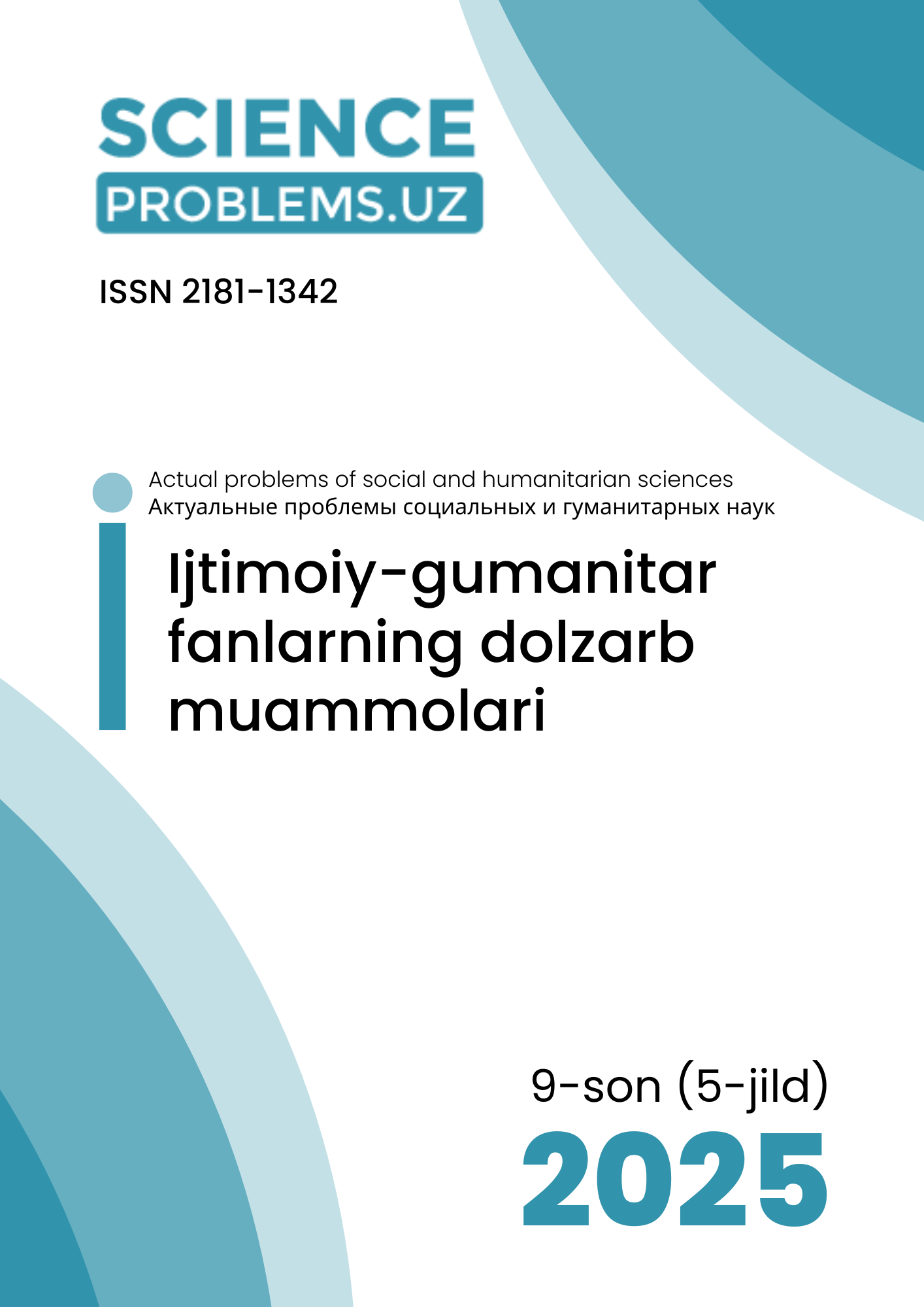THEORETICAL FOUNDATIONS OF THE SYSTEMATIZATION AND CLASSIFICATION OF MOTIFS IN FICTION
DOI:
https://doi.org/10.47390/SPR1342V5I9Y2025N12Keywords:
literary motif; systematization; classification; theme; plot; archetype; leitmotif; chronotope; motifeme; Thompson Index; Frenzel Dictionary; intertextuality; national-cultural interpretation.Abstract
In this article, the theoretical foundations for systematizing and classifying literary motifs are analyzed. Drawing on the views of scholars such as Veselovsky, Tomashevsky, Garmash, Meletinsky, Jung, and Frye, it elucidates the semantic, structural, and thematic interpretations of the motif, as well as the interrelations among motif-theme-plot; by their function within the plot, connecting (dynamic) and free (static) motifs are distinguished. By scope and origin, traditional and individual (leitmotiv) types are identified; across genres (lyric, epic, dramatic), predominant motifs are considered; and by content-imagery characteristics, a system of mythological, situational, action, imagistic, characterological, landscape, spatial (linked to the chronotope), and psychological motifs is proposed. Within a comparative-historical approach, the role of Thompson’s motif index and Frenzel’s dictionary is demonstrated, and examples substantiate the national-cultural interpretations of motifs and the processes of their migration and transformation. On the basis of the motifeme-allomotif pair, the author defines criteria (substantive essence, functional role, and genre and cultural conditioning) and presents a conceptual model for the practices of intertextual analysis, translation, comparative literary studies, and for building a corpus of motifs.
References
1. Daemmrich, Horst S., and Ingrid G. Daemmrich. Themes and Motifs in Western Literature: A Handbook. Tübingen: Francke, 1987.
2. Хализев В.Е. Теория литературы / В.Е. Хализев. [3-е изд.. испр. и доп.]. – М.: Высш. шк., 2002. – 437 с. 301-bet.
4. Томашевский Б.В. Теория литературы. Поэтика / Б.В. Томашевский. – М.: Аспект Пресс, 1996. – 334 с. 185-bet.
5. Гармаш Л. В. Теория мотива в литературоведении //Наукові записки Харківського національного педагогічного університету імені ГС Сковороди. Сер.: Літературознавство. – 2014. – №. 1 (2). – С. 10-22.
6. Solijonov Y., Qoʻchqarov Oʻ. Adabiyotda motivning o‘rganilish tarixi // Oriental Renaissance: Innovative, educational, natural and social sciences. – 2023. – № 3(5). – С. 1117-1123.
7. Meletinskiy E.M. The Poetics of Myth / Eleazar M. Meletinsky; transl. by Guy Lanoue, Alexandre Sadetsky. – London: Routledge, 2013. – 516 p. 110-bet.
8. Frye N. The archetypes of literature //The Kenyon Review. – 1951. – Т. 13. – №. 1. – С. 92-110.
9. Jung, C.G. Civilization in Transition / C.G. Jung; Ed. by Gerhard Adler, Michael Fordham, Sir Herbert Read; transl. by R.F.C. Hull. – 1st ed. – London: Routledge, 1964. – 640 p. 395-bet.
10. Sollors W. et al. The Bluish Tinge in the Halfmoons; Or, Fingernails as a Racial Sign: The Study of a Motif //Thematics: New Approaches. – State University of New York Press, 1995.
11. Пушкин А.С. Евгений Онегин / Пушкин А.С. – М.: ДА! Медиа, 2014.
12. https://www.sparknotes.com/lit/underground/motifs/
13. Khudayberdiyev A. The artistic concepts of “nation” and “homeland” in Uzbek literature of the 20-30s of the 20th century //SHS Web of Conferences. – EDP Sciences, 2024. – Т. 195. – С. 01002.
14. Kristen Lee Over. Motif in Literature. https://www.encyclopedia.com/history/dictionaries-thesauruses-pictures-and-press-releases/motif-literature
15. Sharipova M. O‘tkir Hoshimovning “Ikki eshik orasi” romanida personaj ruhiy holatini ifodalovchi vositalar tahlili //International Conference on Modern Development of Pedagogy And Linguistics. – 2024. – Т. 1. – №. 5. – С. 3-7.
16. Murphy T. P. From Veselovskian Motif to Proppian Function //The Fairytale and Plot Structure. – London: Palgrave Macmillan UK, 2015. – С. 29-33.; Ioffe D. East-European Critical Thought: Myth, Religion, and Magic versus Literature, Sign and Narrative. Religions 12: 717 //East-Slavic Religions and Religiosity. –2021. –С. 1.
17. Amineva V. R. et al. Motif as a concept of comparative poetics //Journal of language and literature. – 2014. – Т. 5. – №. 3. – С. 17-21.
18. Arweiler, Alexander. “Thematics: Studies in Subject-Matter and Motifs (CT)”. Brill’s New Pauly Online. Brill, 2006.
19. Frenzel, Elisabeth. Motive der Weltliteratur. 3rd ed. Stuttgart: Kroner, 1988.
20. Riikonen H. K. In the Gloom of the Hall”: Chronotopic Motifs in Dubliners //Joyce’s Dubliners, Lectures Critiques, Critical Approaches. – 2001. – С. 117-123.
21. https://en.wikipedia.org/wiki/Motif-Index_of_Folk-Literature








